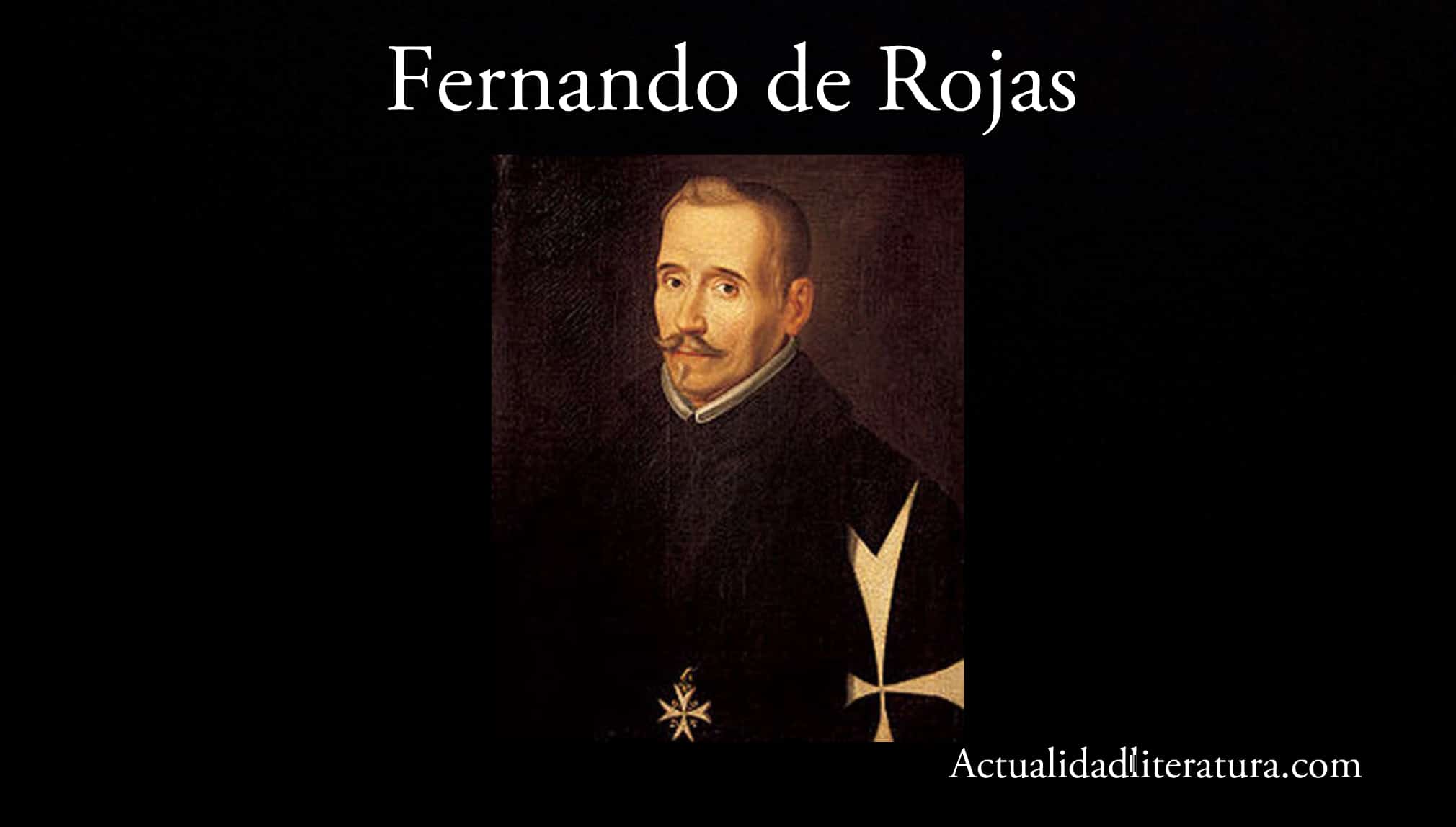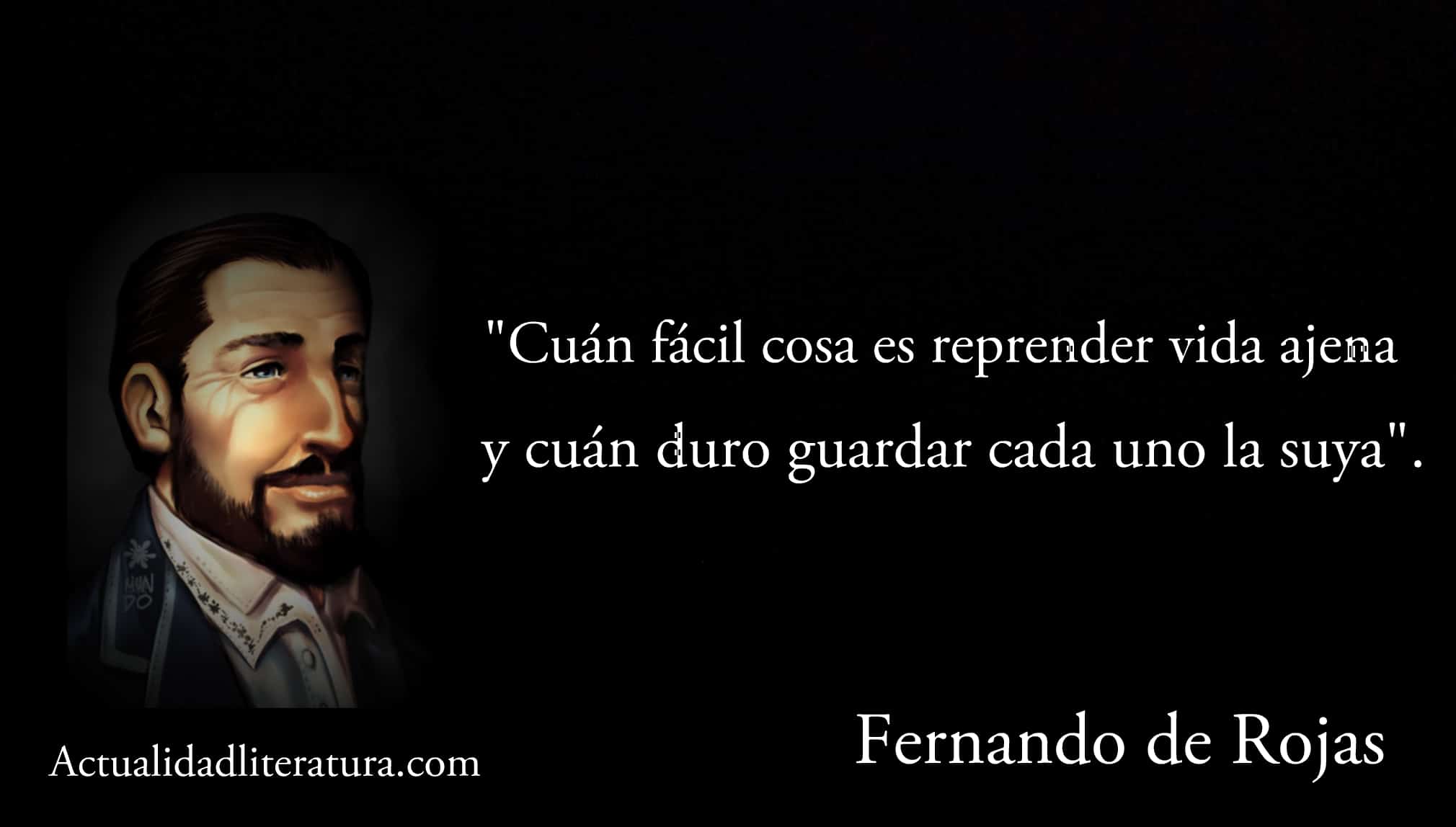
Ferdinand de Rojas.
La Celestina It is considered one of the most important works of Spanish literature due to its historical relevance. Its content reflects important details regarding the artistic and cultural transition of the late XNUMXth and early XNUMXth centuries. It was also a revolutionary time for literature due to innovations in the use of language and changes in style.
Moreover, La Celestina it has been located by most literary scholars within the genre of tragicomedy. Nevertheless, It is difficult to classify this work within a specific genre, since death and tragedy are crucial elements in the development. Similarly, the authorship of this piece presents some questions that have not been completely resolved for centuries.
Authorship of La Celestina
Fernando de Rojas has been recognized as the author of La Celestina. However, many sources suggest that this Spanish writer only completed a text prepared by an unknown writer. Regarding the identity of the anonymous writer —Whose first act remained in the definitive structure of the piece— historians point to Menéndez and Pelayo.
Biographical synthesis of Fernando de Rojas
He was born in La Puebla de Montalbán, Toledo, Spain, in 1470, into a family of converted Jews harassed by the Inquisition. He obtained a Bachelor of Laws degree from the University of Salamanca. There, students were required to study for three years at the Faculty of Arts. Where, probably, he received knowledge of Greek philosophy and the Latin classics.
In Talavera, Rojas practiced as a lawyer and for some years as mayor before dying in 1541. Although he is only known to have a single book to his credit -La Celestina— it is a fundamental work for Spanish letters. The author himself acknowledged in a letter that he got the first act written and, as he liked it very much, he decided to complete it.
Versions of La Celestina

The Celestine.
You can buy the book here: No products found.
The first known version, Calisto and Melibea comedy (published anonymously in Burgos), dates from 1499 and consists of 16 acts. In 1502 it was published under the name Tragicomedy by Calisto and Melibea. Despite the dramatic nature of the play, its length —the latest version consists of 21 acts— makes it impossible to stage it on stage.
Certainly, La Celestina it was written to be read by the intellectual elite of the day or aloud to cultured listeners. Therefore, the manuscript passed through many hands before reaching the printers, who added the preceding summaries to each act. In fact, from the appearance of the first version until the end of the 109th century, XNUMX editions of the work are known.
Summary
First act
Calisto falls in love with Melibea as soon as he sees her for the first time in his garden (he entered that place chasing a hawk). He pleads, the girl rejects him. At home, Callisto recounts the events to his servants, among them, Sempronio offers to enlist the help of a famous sorceress (Celestina). But, the latter and the servant conspire to swindle the protagonist.
Tricks
The sorceress receives some gold coins at Callisto's house for the supposed spell. Pármeno, another Calisto employee, warns in vain about the fraud to his master, who is desperate. Therefore, Sempronio increases his expectations of getting the maximum possible profit from the ruse and communicates it to Celestina. Next, the sorceress goes to Melibea's house.
Upon arrival, he meets Lucrecia (the maid) and Alisa (Melibea's mother). The latter thinks that Celestina comes for commercial purposes. When Melibea knows the true intentions of the old woman, she is enraged. But Celestina manages to persuade the young woman and leaves the place with a cord of this, which, he will use to complete an enchantment.
Deceptions and alliances
En Calisto's house, Celestina "proves" her worth by showing her Melibea's headband. Once the young master calms down, the old woman retires home with Pármeno. The servant reminds Celestina of a promise made by her to him: to deliver Areúsa (one of his disciples) to him. At Celestina's house, the deal is fulfilled.
After spending the night with Areúsa, Pármeno is confronted by Sempronio as soon as he returns to Celestino's domain. After exchanging opinions, both servants decide to ally to achieve their particular plans. Later, Calisto's servants come to Celestina's house to share a meal with Elicia (another of the old woman's pupils) and Areúsa.
More lies
Celestina is summoned to Melibea's house through Lucrecia. Then, the girl confesses to the old woman her love for Callisto and asks her to arrange a secret date with the young man. However, Alisa does not feel comfortable about the relationship between her daughter and Celestina because of the old woman's bad reputation. But the young woman decides to lie and defend the sorceress.

Quote by Fernando de Rojas.
When Celestina tells her about her arranged date with Melibea at midnight, Calisto gives her a gold chain as a sign of gratitude. When the agreed time arrives, the boys meet, chat for a while and agree on a future second meeting. Upon returning home, Melibea is surprised by her father, although she manages to invent an excuse for him.
Greed
Sempronio and Pármeno arrive at Celestina's house to ask for their share of the revenues. But the old woman refuses, consequently, they murder her. In the next act, Callisto finds out from Sosia and Tristán (his other two servants) about the death of Sempronio and Pármeno. They were executed in a public square in retaliation for the crime they perpetrated.
Revenge and intrigues
Calisto arrives late (escorted by Sosia and Tristán) to the second date with Melibea, therefore, the young people have little time together. In the meantime, Areúsa and Elicia summon Centurio to help them avenge the death of their tutor and lovers. On the other hand, Pleberio and Alisa (Melibea's parents) talk about marrying her off at a convenience.
The tragic end
Areúsa gets additional information to execute her plan thanks to an unsuspecting Sosia. Revenge would be consummated during the next meeting between Calisto and Melibea. In the moment of truth, Callisto's servants manage to escape Traso (the assassin hired by Centurio). Unfortunately, when Callisto goes out to see what happens, he slips, falls down a ladder and dies.
A disheartened Melibea climbs to the top of a tower to disgrace herself, ask for forgiveness, and confess to her father about her encounters with Callisto. Faced with the desperate situation, Pleberio can only see from a distance how his daughter commits suicide after jumping into the void. Finally, the young woman's father recounts the events to his wife and ends up crying inconsolably.